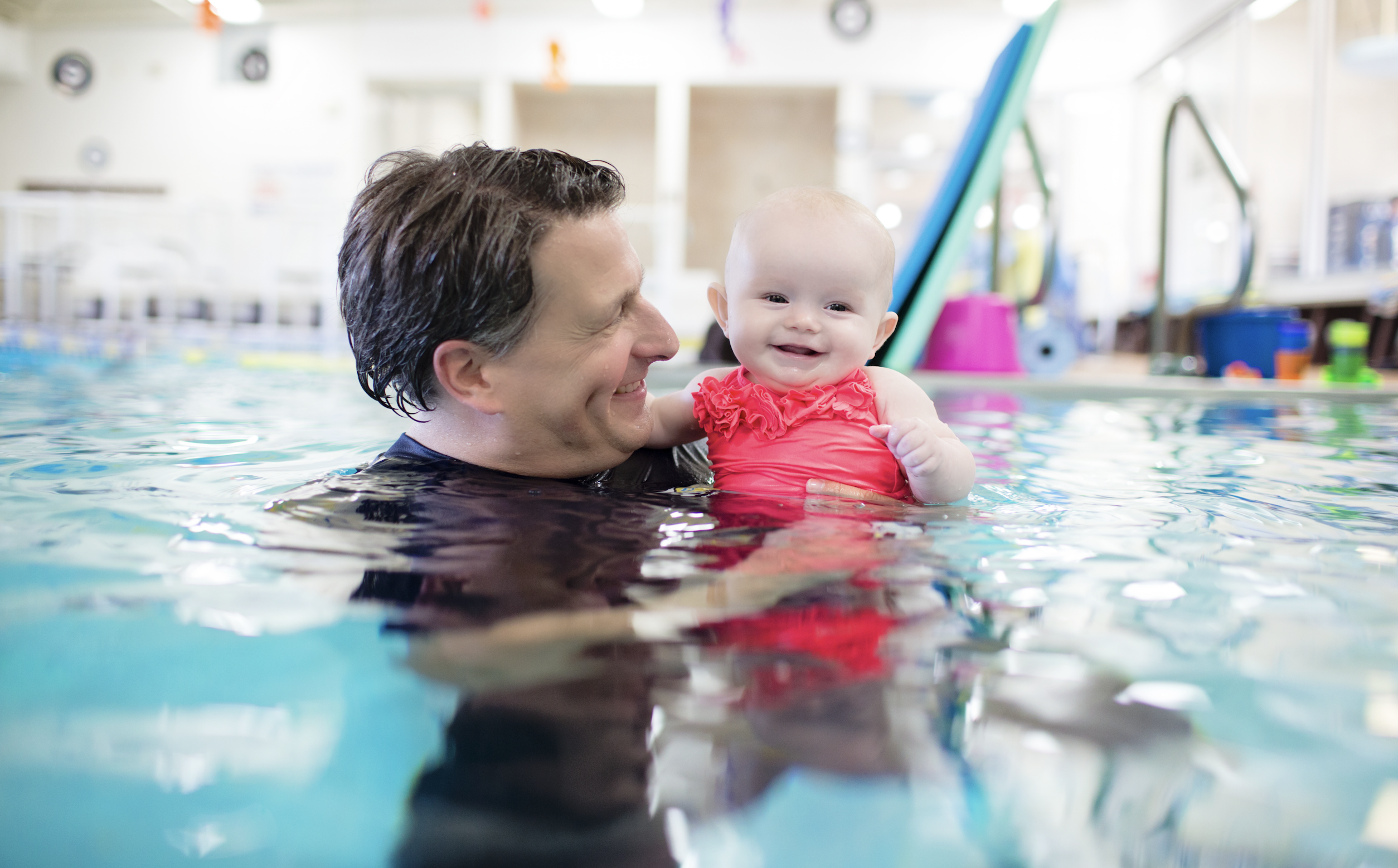Parents who are considering signing up for infant swim classes, especially for the first time, don’t always know what to expect. They understand – correctly – that babies aren’t going to “learn to swim” any stroke when they are just six months old. If that’s the case, then how do we measure the effectiveness of swim class for babies? Isn’t it better to wait until children are older, stronger and more teachable?
It’s never too late to learn to swim, but at Foss Swim School we highly recommend infant swim classes at our swim schools or wherever you can attend them, provided the focus is on teaching babies comfort and familiarity with water and that all safety protocols are in place.
When gauging what the outcome of baby swim classes will be, it’s important to remember that learning to swim isn’t an event – it’s a journey. So the “effectiveness” of infant swim lessons needs to be seen in that context – does it contribute to a progression that will ultimately result in a child being a strong, confident swimmer?
Here are the lessons a good infant swim class will teach
That water can be a place of comfort: We always have a parent in the water for the first few levels. This is bonding time, and the child learns that the water is a place where they can play, cuddle, be held and generally be with people who care for them. This helps overcome the natural fear of the unknown that babies have.
That fun things happen in the pool: Repetition is part of learning, and in the case of babies, there needs to be more repetition than for older kids. We do the same things, sing the same songs, in the same order, for several classes in a row. This builds familiarity, leads to an anticipation of fun, and reinforces the sense of comfort, all important foundational pieces of a love of water.
(By the way, we know parent sometime tire of the repetition – but it’s all with a purpose. After all, this isn’t geared for adults!)
How their body feels and works in water: Through the games and activities, we are teaching babies through experience about buoyancy, how to scoop water, how to blow bubbles and more. Scooping water as they do the “Wheels on the Bus” inherently teaches them how water resistance feels, and blowing bubbles is an early lesson in breath control. Every game we play adds to their subconscious understanding of the properties of water.
That they should have an adult in attendance: Especially at this young age, we want kids to see water most naturally as a place they are with an adult. Adults help them make arm and leg motions, and move them through the water. We are not teaching them at this stage to learn independently – that’s not the point Later, when they are toddlers, they will learn to only enter the water when an adult says its OK through games like Humpty Dumpty.
Eventually, that water must be respected: This lesson to wait for cues to enter the water, and eventually learning to do more on their own (like turning to find the wall and climb back out) teaches children to respect water and follow rules, the foundation of water safety.
The gift of feeling natural around water
Ultimately the effectiveness of baby swim lessons may not be appreciated until years later. In our eyes, the best outcome of baby swim lessons is that it leads to toddler swim lessons, then a progression of levels after which a child will realize that they can’t remember a time before they could swim.
That feeling – that swimming is as natural as walking – is in our opinion one of the greatest gifts a parent can give their child. And it starts with baby swim class!
Learn more about the FOSS Swim Path and our Backfloat Baby program, and then sign up for a free preview lesson.
